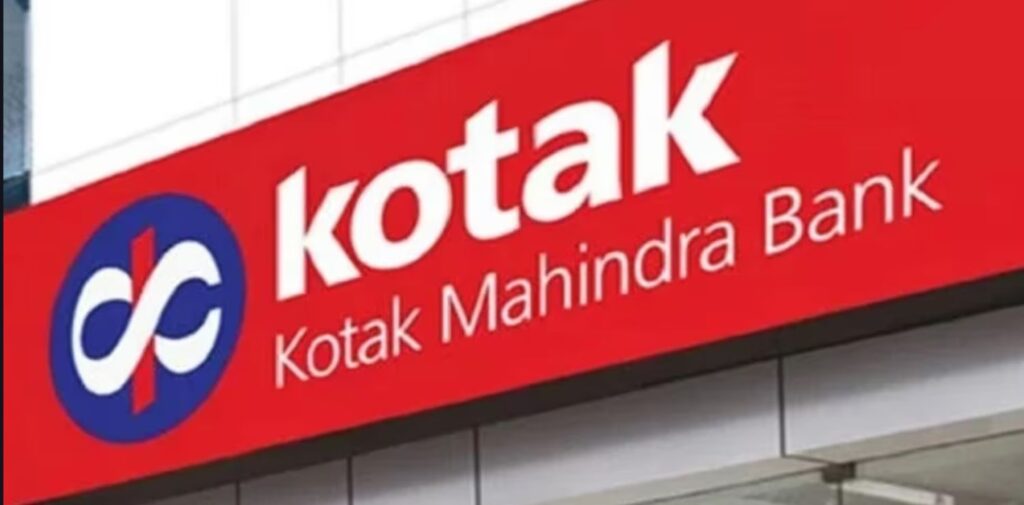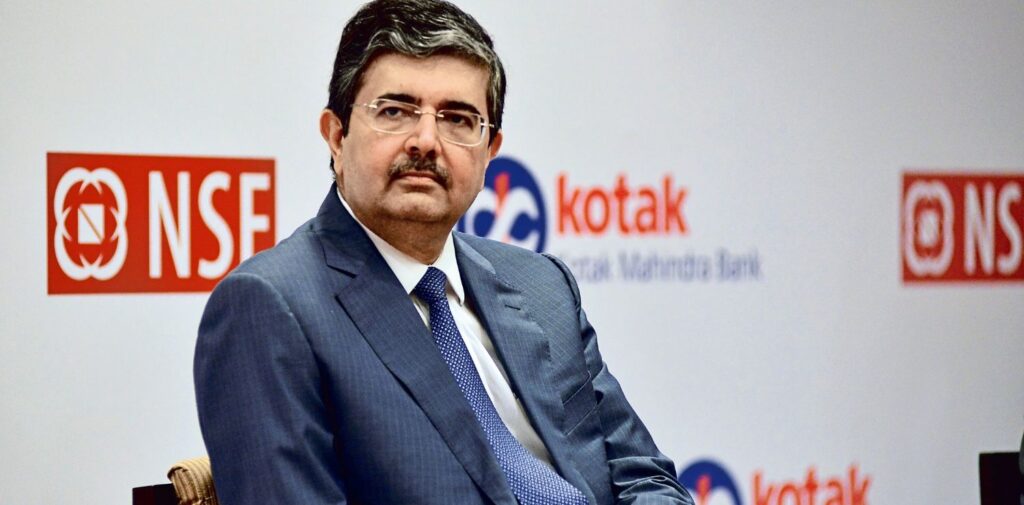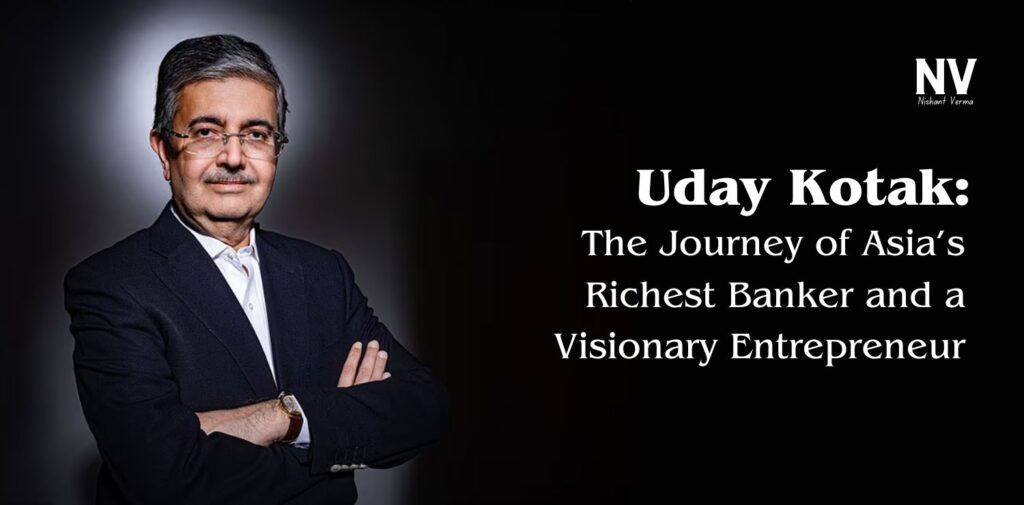In a country where entrepreneurship has often been seen as risky, Uday Kotak emerged as a shining example of perseverance, vision, and financial acumen. From humble beginnings to becoming the richest banker in Asia, Kotak’s journey is not only inspirational but also a testament to what can be achieved with determination and strategic foresight. With a personal net worth of over $13 billion, Kotak has transformed the financial landscape of India, leaving an indelible mark on the banking and finance sector. His story is one of resilience, calculated risks, and unwavering belief in his dreams.
The Early Days: A Decision that Changed Everything
Born on March 15, 1959, in Mumbai, Uday Kotak came from a modest family that was involved in the cotton trading business. While the family had a strong business foundation, Kotak’s aspirations lay beyond the traditional family enterprise. He was academically inclined, excelling in school and later securing a degree from Sydenham College in Mumbai. Subsequently, he earned an MBA from Jamnalal Bajaj Institute of Management Studies, one of the leading business schools in India.
In the early 1980s, when Kotak completed his studies, India’s economy was closed off to global markets, and the financial sector was largely dominated by government-owned banks. Foreign companies had limited entry into the Indian market, and entrepreneurship was not the go-to career path for young professionals. It was a time when a stable job with a multinational corporation was considered a dream for many.
Kotak had offers from several prestigious multinational companies, but he had a different vision for himself. In a bold and unconventional move, Kotak declined these offers and decided to venture out on his own. This decision marked the beginning of Kotak’s entrepreneurial journey, a path that would lead him to build one of the most successful financial empires in India.

The Birth of Kotak Mahindra Finance
In 1985, with a modest loan from friends and family, Uday Kotak launched a small bill-discounting business, providing short-term credit to companies against the sale of goods. This was the era when financial institutions were heavily regulated, and credit was not easily accessible to businesses. Kotak’s idea was simple but effective: provide businesses with working capital by purchasing their receivables at a discount. This allowed companies to manage their cash flow more efficiently, and for Kotak, it provided an entry point into the finance industry.
From this small but profitable venture, Kotak Mahindra Finance was born. Initially, the firm operated as a non-banking financial company (NBFC), offering various financial products like lease financing and hire purchase. Uday Kotak’s ability to understand market gaps and design innovative financial solutions set his company apart from competitors. Over the next two decades, Kotak Mahindra Finance expanded its portfolio, offering a range of financial services including investment banking, stockbroking, insurance, and asset management.

Transitioning into Banking: A Bold Move
The 1990s marked a significant shift in India’s economic landscape. In 1991, the Indian government introduced economic reforms that liberalized the economy, allowing greater participation of private enterprises and foreign investments. This also led to the deregulation of the banking sector, providing an opportunity for private entities to enter the field.
Uday Kotak seized this opportunity. In 2003, Kotak Mahindra Finance became Kotak Mahindra Bank, making it the first non-banking finance company in India to convert into a bank. This was a pivotal moment not only for Kotak but also for India’s banking industry. The move was audacious—transitioning from an NBFC to a fully-fledged bank was no easy task. It required adherence to stricter regulatory requirements and raised the stakes significantly.
Yet, Kotak had the foresight to recognize that banking was where the future lay. By becoming a bank, Kotak Mahindra could now accept deposits, provide loans, and offer a wider range of services, bringing it into direct competition with established players like ICICI, HDFC, and government-owned banks. Despite the challenges, Kotak Mahindra Bank grew rapidly under his leadership.
Strategic Acquisitions and Growth
One of the key elements that fueled Uday Kotak’s rise to the top was his strategic mindset when it came to acquisitions and partnerships. He understood that scaling a business, particularly in a highly competitive market, required both organic growth and mergers.
In 2014, Kotak Mahindra Bank made a major acquisition by merging with ING Vysya Bank. This merger helped Kotak Mahindra Bank expand its reach across India, particularly in the southern regions where ING Vysya had a strong presence. The merger was one of the largest in the Indian banking sector at the time, adding over 10,000 employees and 1,000 branches to Kotak Mahindra Bank’s network.
Uday Kotak was also ahead of the curve when it came to digital banking. Long before fintech became a buzzword, Kotak Mahindra Bank began investing in digital platforms to make banking more accessible. From mobile banking to online wealth management services, Kotak Mahindra was quick to adopt technology that enhanced customer experience and operational efficiency.

A Billionaire Banker: Wealth and Recognition
As Kotak Mahindra Bank continued to grow, so did Uday Kotak’s wealth. His stake in the bank, combined with the success of the company’s other financial ventures, propelled him to billionaire status. In 2020, he became the richest banker in Asia, with Forbes estimating his net worth at $14 billion. Kotak Mahindra Bank’s stock soared, rewarding shareholders and turning Kotak into one of the wealthiest individuals in India.
Apart from his financial success, Kotak has received numerous accolades for his contributions to the banking and finance industry. He has been featured in Time magazine’s list of the 100 most influential people in the world and has been ranked among the world’s top bankers by various financial publications. His leadership style, characterized by a long-term vision, calculated risks, and a focus on innovation, has made him a respected figure both in India and globally.
A Visionary for the Future
Uday Kotak’s success goes beyond just building a financial empire. He has consistently demonstrated a vision for the future, particularly when it comes to the Indian economy. Kotak has been an advocate for economic reforms and greater financial inclusion in India. He has often spoken about the importance of building a robust banking system that can serve the needs of a growing economy and help elevate millions out of poverty.
Kotak Mahindra Bank, under his leadership, has focused on expanding its reach to rural areas, offering financial services to people who have historically been underserved. Kotak has also been vocal about the need for India to embrace digital transformation in the banking sector, arguing that technology can help bridge the gap between traditional banking services and the needs of a younger, tech-savvy population.
Conclusion: The Legacy of Uday Kotak
Uday Kotak’s journey from a small bill-discounting business to becoming the richest banker in Asia is nothing short of extraordinary. His story exemplifies what can be achieved through vision, hard work, and a willingness to take risks. In an industry that is often slow to change, Kotak has consistently been a step ahead, whether through strategic acquisitions, technological adoption, or expanding financial inclusion.
Kotak’s legacy is not just in the billions he has accumulated, but in the way he has transformed India’s banking sector. He has built a financial powerhouse that continues to grow and evolve, setting benchmarks for the industry. For aspiring entrepreneurs and bankers, Uday Kotak’s story is a beacon of what is possible when you believe in your vision and work relentlessly to make it a reality.




